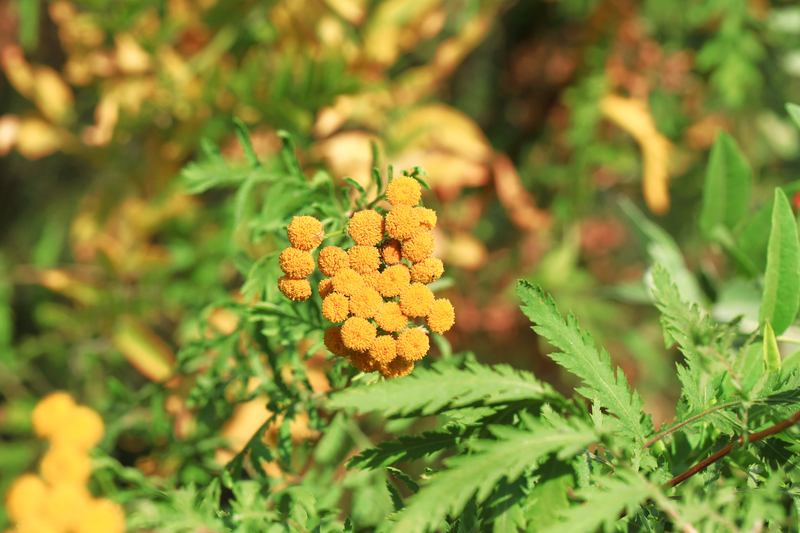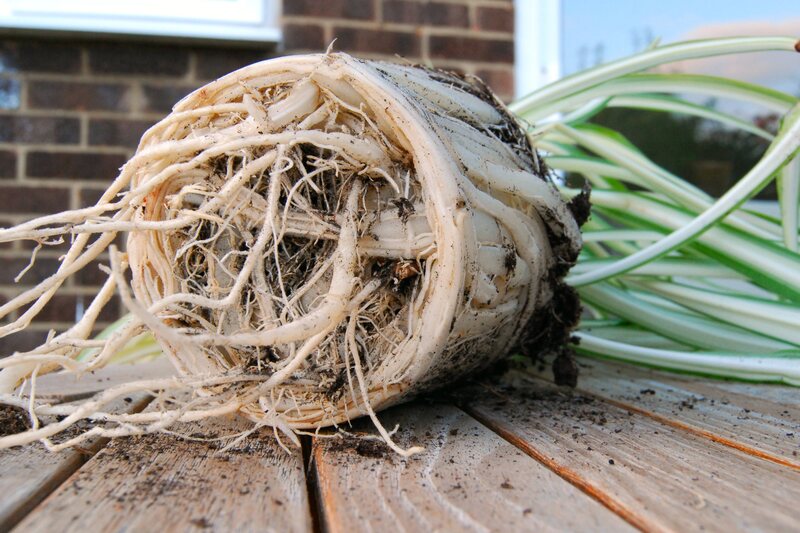How to Maintain a Flourishing Garden through Winter
Posted on 15/09/2025
How to Maintain a Flourishing Garden through Winter
As the chill of winter creeps in, many gardeners fear the loss of months of hard work and the sight of once-vibrant plants succumbing to frost. However, with the right techniques and timely actions, maintaining a flourishing garden through winter is more than possible--it's an opportunity to set the stage for a magnificent spring. In this guide, we'll walk you through everything you need to know to keep your garden thriving throughout the colder months, from preparation to plant selection, protection techniques, and winter garden care tips.
Why Winter Garden Care Matters
Winter is not just a dormant period; it's a critical season that determines your garden's vitality come spring. Proper winter garden maintenance protects roots, keeps soil healthy, and enables plants to bounce back stronger. Neglect during these months can lead to pest infestations, diseases, and even the death of cherished plants.

Essential Preparations for a Flourishing Winter Garden
Assessing Your Garden's Needs
Begin by assessing your garden space. Take note of which plants are frost-tolerant and which need extra protection. Review local winter weather patterns to select appropriate winter gardening strategies.
Cleaning and Clearing Garden Beds
Remove any spent annuals, fallen leaves, and plant debris to prevent the harboring of pests or diseases. Clean garden tools and store away equipment to ensure they're ready and rust-free for spring use.
- Prune dead or diseased branches from shrubs and perennials.
- Compost healthy plant materials to enrich the soil.
- Dispose of infected plants to avoid contamination.
Choosing the Right Plants for Winter Resilience
A key aspect of maintaining a flourishing winter garden is selecting plants that are well-suited to cold and fluctuating temperatures. Some plants not only endure winter but actually thrive during cold spells.
Hardy Perennials and Shrubs
- Hellebores - Beautiful, cold-resistant flowers that bloom in winter and early spring.
- Winterberry (Ilex verticillata) - Offers vibrant berries, attracting birds and adding color.
- Boxwood - Evergreen shrubs that provide structure and lushness even in deep winter.
Winter Vegetables
Certain vegetables perform exceptionally well in winter gardens. With the right protection, these can supply fresh produce even during the cold months:
- Spinach
- Kale
- Brussels sprouts
- Carrots
- Leeks
- Swiss chard
Choose varieties labeled as "winter hardy" and sow seeds well before the soil freezes.
Protection Methods to Keep Your Garden Flourishing through Winter
Mulching for Insulation
A thick layer of mulch acts as a vital insulator, protecting roots from freeze-thaw cycles and locking in soil moisture.
- Apply 2-4 inches of organic mulch (straw, shredded leaves, pine needles) around the base of plants.
- Keep mulch a few inches away from stems to prevent rot.
- Remove some mulch in early spring to encourage new growth.
Using Floating Row Covers and Cloches
For delicate plants and vegetable beds, row covers and cloches offer essential protection against frost and windburn. Use breathable fabrics to allow sunlight and moisture through, but still shield plants from extreme temps.
- Secure covers with stakes or weights to prevent wind displacement.
- Ventilate on milder days to avoid overheating on sunny winter afternoons.
Protecting Container Plants
Potted plants are particularly vulnerable. Move containers closer to the house, group them together for warmth, and wrap pots with burlap or bubble wrap for insulation.
Shielding Trees and Shrubs
Heavy snowfall and ice can severely damage woody plants.
- Tie broadleaf evergreens loosely to prevent limb splitting.
- Use burlap screens to block harsh winter winds.
- Brush snow off branches gently to prevent breakage.
Winter Watering Tips for a Thriving Garden
Many gardeners overlook winter watering, but dehydration is a real risk when the ground is cold and air is dry.
- Water deeply before a hard freeze if the ground is not frozen.
- Focus on evergreens and newly planted trees or shrubs.
- Avoid frequent shallow watering, which can cause roots to surface and freeze.
- Water on warmer days when the soil can absorb moisture.
Soil Care and Amendments During Winter
Excellent winter garden maintenance depends on healthy soil. Late autumn is the perfect time to add organic amendments like compost, manure, or leaf mold.
- Topdress garden beds with compost to enrich and protect soil microbiology.
- Avoid working wet, frozen soil to prevent compaction and root damage.
- Consider cover crops (e.g., winter rye) to hold soil in place and fix nutrients.
Encouraging Wildlife in the Winter Garden
A flourishing winter garden supports not just plants, but the local ecosystem. Encourage birds, insects, and beneficial critters by:
- Leaving some seed heads and berries for food
- Installing bird feeders and water sources kept thawed
- Providing shelter with brush piles or nesting boxes
Keeping Interest and Aesthetics Alive in the Winter Garden
Winter landscaping can be beautiful. Add elements to maintain visual appeal, such as:
- Evergreen foliage for year-round color
- Bark with interesting textures, like birch or red-twig dogwood
- Ornamental grasses and seed pods that glisten when frosted
- Garden art, sculptures, or decorative birdbaths
Lighting can add dramatic effect. Install solar garden lights or string fairy lights to highlight key features. With intentional design, your garden can be just as engaging during winter as in full bloom.
Winter Pest and Disease Management
Pests don't vanish with the cold. Slugs, rodents, and overwintering insects can cause problems for the unprepared gardener.
- Remove hiding spots by keeping the garden tidy.
- Regularly check evergreens for scale or aphids.
- Use physical barriers or repellents for larger pests like deer or rabbits.
- Inspect stored bulbs and tubers for rot and discard any affected specimens.
Greenhouse and Indoor Gardening during Winter
For those wanting to extend the growing season, a small unheated greenhouse or even sunny windowsills can become winter's lifesavers.
- Start early spring seeds indoors under grow lights.
- Overwinter tender perennials in protected indoor spaces.
- Grow microgreens or herbs on kitchen shelves for a continuous harvest.
The Importance of Planning for Year-Round Success
A successful winter garden starts with good planning. Use the slower pace of winter to:
- Review garden journals and make notes on what worked
- Order seeds and catalogs for next year
- Sharpen, repair, and organize tools for spring readiness
By integrating these strategies into your winter garden routine, you're not just maintaining your garden's health through winter, but nurturing it to be stronger, more resilient, and more productive than ever.

Frequently Asked Questions about Maintaining a Flourishing Garden through Winter
-
Is it too late to plant anything in winter?
Many trees, shrubs, and cold-hardy vegetables can be planted in late autumn or overwintered in milder regions. Check your local planting schedule for winter-suitable options. -
How do I prevent frost damage on sensitive plants?
Cover vulnerable plants with fleece or burlap and mulch heavily to insulate roots. -
Should I water my garden during winter?
Yes, especially for evergreens and new plantings. Only water when soil is above freezing and water can be absorbed. -
Can I keep my compost pile going in winter?
Composting slows in cold weather but can continue. Insulate the pile or use a covered bin for best results. -
What about indoor gardening in winter?
Great idea! Grow houseplants, herbs, or microgreens on sunny windowsills to enjoy fresh greenery indoors.
Conclusion: How to Maintain a Flourishing Garden through Winter
Winter presents both challenges and unique opportunities for the dedicated gardener. By embracing seasonal shifts--preparing soil, choosing resilient plant varieties, protecting your garden with care and intention--you can enjoy a vibrant garden year-round. Remember, each action you take during winter fortifies your garden's foundation, ensuring an explosion of growth, color, and productivity come spring.
So, wrap up warm, grab your favorite gardening gloves, and make this winter the season your garden not only survives, but flourishes!



